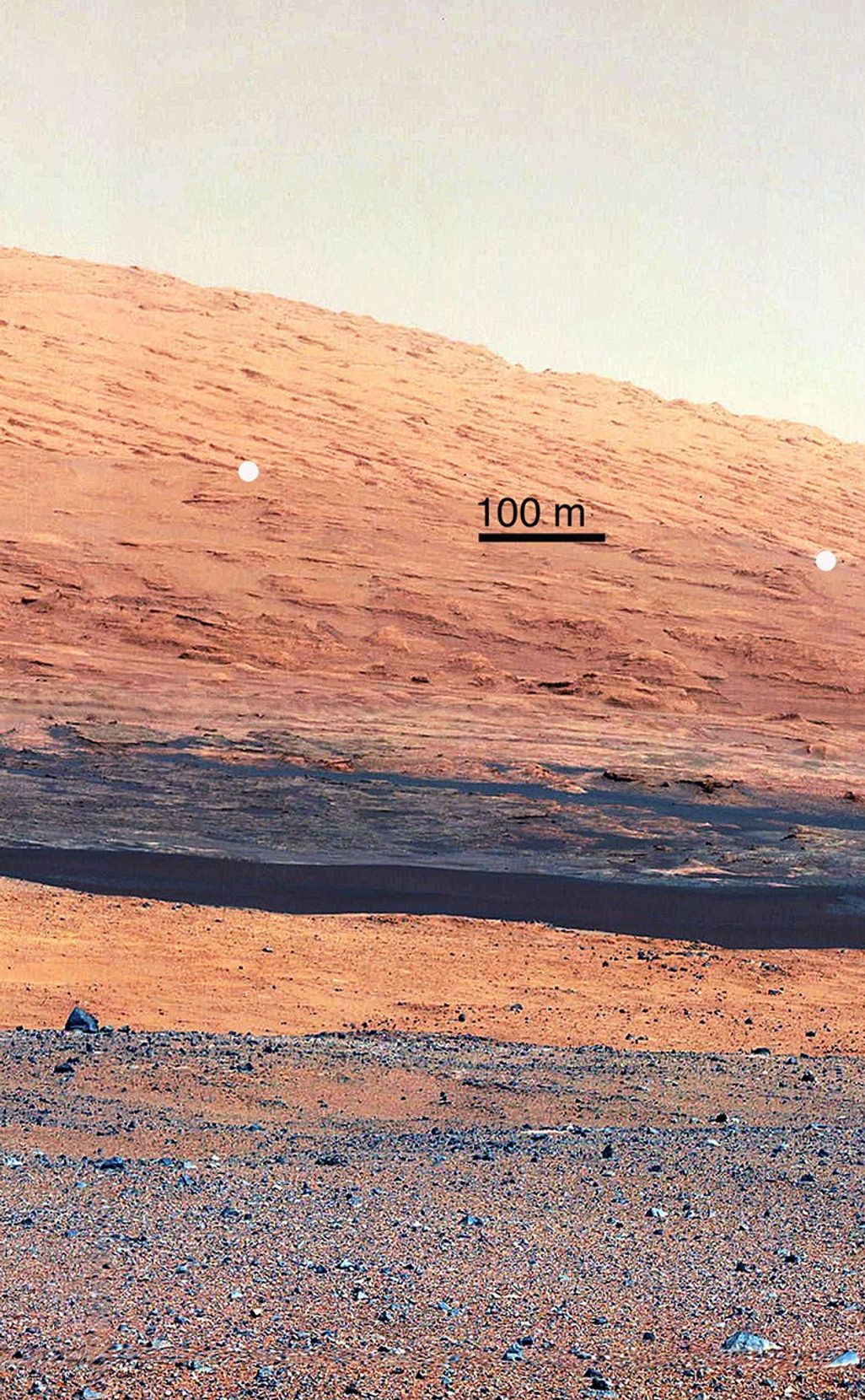Getting to Know Mount Sharp (ANNOTATED)
| Credit | NASA/JPL-Caltech/MSSS |
|---|---|
| Language |
|
This image taken by the Mast Camera (MastCam) on NASA's Curiosity rover highlights the interesting geology of Mount Sharp, a mountain inside Gale Crater, where the rover landed. Prior to the rover's landing on Mars, observations from orbiting satellites indicated that the lower reaches of Mount Sharp, below the line of white dots, are composed of relatively flat-lying strata that bear hydrated minerals. Those orbiter observations did not reveal hydrated minerals in the higher, overlying strata.
The MastCam data now reveal a strong discontinuity in the strata above and below the line of white dots, agreeing with the data from orbit. Strata overlying the line of white dots are highly inclined (dipping from left to right) relative to lower, underlying strata. The inclination of these strata above the line of white dots is not obvious from orbit. This provides independent evidence that the absence of hydrated minerals on the upper reaches of Mount Sharp may coincide with a very different formation environment than lower on the slopes. The train of white dots may represent an "unconformity," or an area where the process of sedimentation stopped.

























